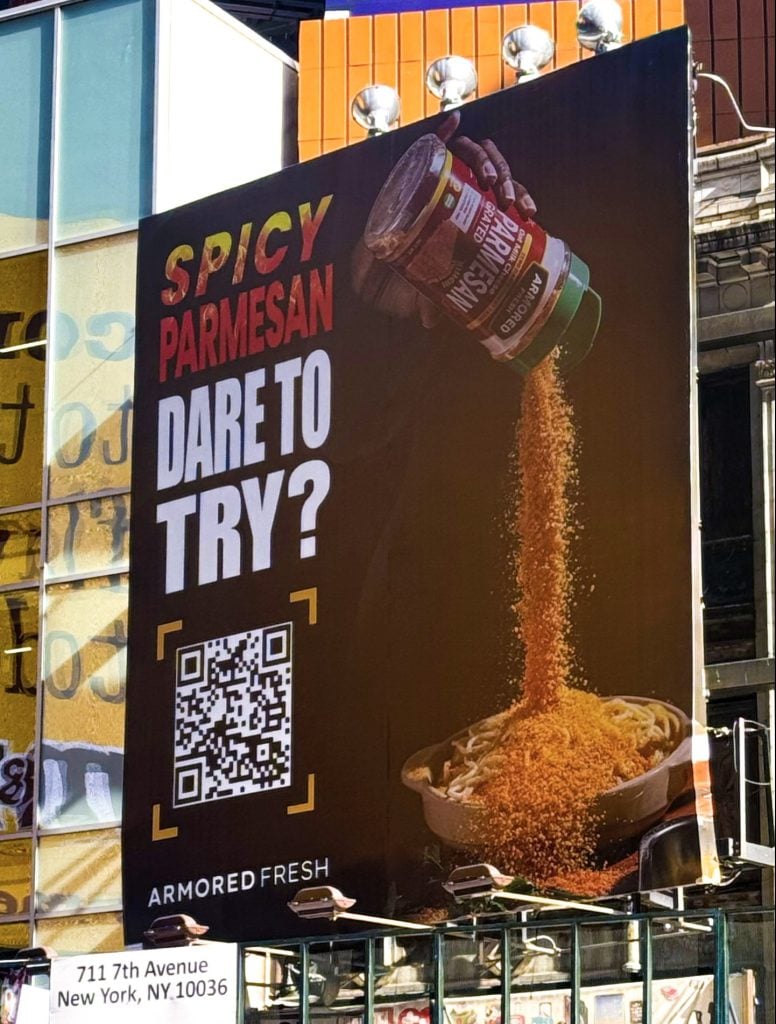Quick Response code, or QR codes as they’re better known. They’re everywhere now. We scan them to see restaurant menus, to send payments, to board flights…and to engage with advertising. So, how about QR codes on billboards? Is it a smart move?
Integrating technology into advertising strategies is essential for maximizing consumer engagement. When used effectively, QR codes can bridge the gap between physical advertisements and digital content, offering consumers an interactive experience.

However, the placement of QR codes is crucial to their success. As a nationwide billboard advertising agency, we’ve seen brands use all sorts of creative avenues to boost engagement—some more effective than others.
What are their ideal placements? Are QR codes wasting valuable space? Will people actually scan them? Read on to learn more about the efficacy of QR codes on billboards.
The Appeal of QR Codes in Advertising
QR codes have become ubiquitous in various advertising mediums due to their ability to provide immediate access to online content, promotions, or contact information. By simply scanning the code with a smartphone, consumers can engage with a brand beyond the static message of a billboard. This interactivity not only enhances user experience but also allows advertisers to track engagement metrics and outdoor ad ROI more effectively.
Do QR Codes Belong on Highway Billboards?
While the idea of integrating QR codes into large-format highway billboards (which are typically around 14’0″ x 48’0″) might seem innovative, several factors suggest otherwise:
Safety Concerns

Encouraging drivers to interact with QR codes while operating a vehicle poses significant safety risks. Scanning a QR code requires drivers to divert their attention from the road, leading to potential accidents. The Out of Home Advertising Association of America (OAAA) advises against using QR codes in media viewed by active drivers due to these dangers.
Practical Limitations
The effectiveness of a QR code on a billboard depends on factors such as viewing distance, angle, lighting, and weather conditions. For drivers, these variables make it challenging to scan QR codes safely and accurately.
Missed Opportunities
High-speed travel limits the time available for drivers to notice, comprehend, and act upon a QR code. This brief exposure reduces the likelihood of engagement, making the QR code ineffective in such settings.
QR Codes on Street-Level Outdoor Advertisements
In contrast, street-level outdoor advertisements offer a more conducive environment for QR code utilization:
Increased Dwell Time
Locations with high pedestrian traffic, such as shopping malls, transit hubs, airports, and urban centers, provide longer exposure to advertisements. This extended dwell time allows individuals to engage with QR codes without the pressure of constant movement.
Safety and Accessibility
Pedestrians can safely interact with QR codes without the risks associated with driving. Moreover, these settings often allow for closer proximity to the advertisement, facilitating easier scanning.
Enhanced Engagement
Street-level ads can incorporate creative designs and clear calls-to-action alongside QR codes, encouraging immediate interaction. For example, a QR code on a bus shelter poster can lead to a promotional video or a discount coupon, providing instant value to the consumer.
Best Practices for QR Codes in Outdoor Advertising
To maximize the effectiveness of QR codes in outdoor settings, consider the following best practices:
- Strategic Placement: Ensure QR codes are placed in areas with high foot traffic where individuals have the time and ability to engage safely.
- Clear Call-to-Action: Accompany QR codes with concise messaging that informs viewers of the benefit they will receive upon scanning, such as “Scan to receive a 20% discount.”
- Optimal Design: Design QR codes to be easily scannable by ensuring sufficient size, contrast, and error correction levels. Additionally, customizing the QR code to align with brand aesthetics can attract more attention.
- Mobile-Friendly Content: Ensure that the content linked to the QR code is optimized for mobile devices, providing a seamless user experience post-scan.
Final Thoughts: QR Codes on Billboards
QR codes can significantly enhance consumer interaction when thoughtfully integrated into outdoor advertising. But don’t go placing them just anywhere. While large-format highway billboards may not be suitable due to safety and practicality concerns, street-level advertisements present an ideal platform for QR code engagement.
Ready to launch an outdoor media campaign that gets your target audience talking? Fill out our simple online form and receive a custom interactive proposal with placements in your target area.
